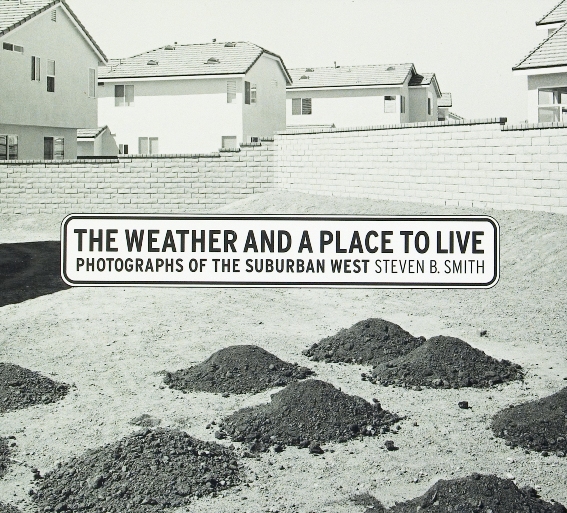
I wrote about Steven B Smith's series, The Weather and a Place to Live, in passing recently, but I've now got my hands on a copy of the book, which won the Center for Documentary Studies / Honickman First Book Prize in Photography in 2005, and have had the chance to have a more in-depth look.
The series focuses on the "American West", one of the great photographic subjects of both the nineteenth and twentieth centuries. The "American West"... for some reason the name itself sounds epic. Tackling this subject is no small undertaking, particularly given those that have done so in the past. Smith is clearly indebted to the New Topographics, the group of landscape photographers that featured in George Eastman House's seminal 1975 exhibition (Note: the show has been restaged this year and is currently traveling around the US before coming to Europe. I have just got a copy of the catalogue, so expect a review of this in the coming weeks).
The parallels with the New Topographics are obvious, but Smith's approach feels very much his own. He has focused in on one specific aspect of these landscapes, which is the mechanics of the steadily expanding suburban sprawl. Suburbia is being built at a furious pace and in many of these photographs it feels as if the dust has not yet had the time to settle.
Smith is not photographing a finished landscape, but one that is in rapid flux. This reminded me of Ryuji Miyamoto's concept of "temporary ruins" that he used to refer to the buildings that he photographed around Japan as they were being destroyed, only to be replaced almost instantly by a new structure of some kind (the series Architectural Apocalypse). Toshio Shibata's work on the complex infrastructure of Japan's roads occupies a similar space. His images also deal with a changing landscape, where extraordinary feats of engineering attempt to find some harmonious coexistence with nature.
The thing that I found differentiated Smith's work from these other series, and much of landscape photography in fact, is the emotional range of his images. This kind of work normally operates in a deadly serious register, oscillating between the beautiful and the ordinary, but almost always without emotion. I found that Smith's images treaded slightly different ground: they evoke fear, amazement, even sadness, but also a healthy does of humour at the ridiculousness of these manufactured landscapes.
Ridiculous is a word that kept coming to mind with these images. The ridiculousness of suburbia slowly taking over an area that is almost a universal symbol for wilderness: the American West. The ridiculousness of trying to trim and tame a landscape this wild and this epic in scale. Smith shows all of this with great subtlety and a wry sense of observation: there are few showy images here.
One thing I struggled with a bit in some of this work is the light. Smith sometimes shoots in very bright sunlight, which I imagine is typical weather for many of these locations, and so some of these images are almost bleached out, which I found distracting. Although this spoiled a couple of individual images for me, it does contribute to evoking the atmosphere of the place. And speaking of place, a special mention should go to the title of this series. As readers of eyecurious will know, titles have never been my forte, so I'm always impressed (jealous) when a title can encapsulate as much as this.
In some ways I felt that the first image of the book (below) could have been the last. It has the look and feel of a graveyard and suggests just how quickly the suburban landscapes that are being built here may fall into ruin.
The Weather and a Place to Live: Photographs of the Suburban West (Durham: Duke University Press, 2005, 128 pages, 80 duotone plates).
Rating: Recommended


